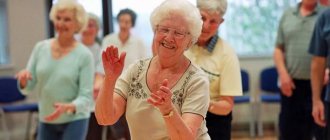We all belong to different social groups and talk about them often. In this article you will learn what social groups are, what characteristics, types and functions they have, as well as why people join groups in general, what causes the emergence of social groups.
To learn how to interact within a social group, find approaches to people, learn how to negotiate and interact better with people, sign up for the online program “Best Communication Techniques”. You will learn and be able to apply in your life 72 of the best communication techniques that we have collected from dozens of books and trainings.
Social group definitions
There is no single clear definition of a social group, so we decided to give several at once:
A social group is an association of people who have a common significant social characteristic on which their participation in some activity is based, connected by a system of relations that are regulated by formal or informal social institutions.
A social group is an objectively existing stable community, a collection of individuals interacting in a certain way based on several characteristics, in particular the shared expectations of each group member regarding others.
A social group is a socially organized community of people united by common interests, goals and joint activities.
Taken together, these definitions make it possible to form the most accurate picture of what a social group is. But there are other features that you should be aware of.
Concept and tasks
In modern psychology, the concept of “social group” is a collection of individuals who have similar features, perform the same type of activity, and perceive themselves as members of a community. The group has 3 main qualities:
- mandatory interaction between participants;
- unity of goals for which the group was created;
- all members have a characteristic unique to this community.
Social psychology of groups studies the process of group formation, its types, structure and influence on the individual. The task of the industry is to assess and forecast the development of the group, identify the characteristics of interaction, and the main criteria. Throughout life, a person simultaneously belongs to several groups and often moves from one to another. This is due to a change in activity or status: for example, a schoolchild becomes a student, a worker becomes a pensioner. In this regard, we can highlight the main task of social psychology of groups - classification according to certain criteria.
Signs, types and functions of social groups
First, let’s look at the signs by which a social group can be identified:
| ✔ | Interaction of its members. It can be either direct or indirect. |
| ✔ | The presence of relationships between group members. |
| ✔ | Sustainability. In other words, a social group cannot be called a community of people that exists for a small amount of time. |
| ✔ | Having a common goal. |
| ✔ | Role expectations of group members regarding each other. |
| ✔ | Role expectations of group members regarding each other. |
| ✔ | Availability of internal organization and structure. It is not necessary for each member's role to be formally assigned. For example, if you carefully analyze your communication with your friends, you will notice that each of you has been assigned a role. |
| ✔ | Feeling of belonging to a group. |
| ✔ | The presence of specific group behavior patterns. |
Social groups can be classified in several ways:
| ✔ | Big and small. The former include ethnic groups, social classes, professional groups, etc., the latter – the family, work collective, etc. |
| ✔ | Formal and informal. |
| ✔ | Primary and secondary. In the primary group, its members communicate with each other directly and with high emotionality, while communication in the secondary group is formal, official and impersonal. An example of a primary group is a company of friends, a secondary group is a business company. |
It is also worth considering the concepts of ingroup and outgroup. An ingroup is “one’s own,” the group to which an individual belongs. Outgroup – “strangers”, a group to which an individual does not belong.
And, of course, social groups perform certain functions. Firstly, this is the socialization of the individual. A person cannot live outside of any social groups. Secondly, in difficult situations people come together and the group helps them cope with their problems.
Thirdly, an instrumental function is performed: people unite in a group to achieve certain goals. Finally, the group helps people meet their needs for approval and support. But it’s worth saying a little more about this.
Social and psychological characteristics of the group.
A group is understood as a real existing entity in which people are brought together, united by some common characteristic, a type of joint activity, or placed in some identical conditions, and in a certain way are aware of their belonging to this entity.
Psychological characteristics of the group.
The composition (composition) of a group is a set of characteristics of group members that are important from the point of view of analyzing it as a whole. The composition of a group can be described in different ways depending on whether, for example, the age, professional or social characteristics of the group members are significant in each particular case.
The structure of a group is determined by the functions performed by individual members of the group, as well as by the interpersonal relationships within it. There are several types of group structure: preference structure, “power” structure, communication structure.
Group processes include psychological and organizational processes of cohesion (leadership and management), development of the group as a social unit, group pressure, change in attitudes, etc.
Group norms are certain rules that are developed by a group, accepted by it, and to which the behavior of its members must obey in order for their joint activities to be possible. Norms thus perform a regulatory function in relation to this activity.
The values of each group are formed on the basis of developing a certain attitude towards social phenomena, dictated by the place of this group in the system of social relations, its experience in organizing certain activities.
In order to ensure that group members comply with group norms, there are group sanctions. Group sanctions are a system of rewards and punishments for group members by the group as a whole. People often talk about negative group sanctions (rejection, boycott), but it should be considered legitimate to include positive sanctions (respect, encouragement, recognition) in the system of sanctions.
Classification of groups.
First of all, for psychology it is important to divide groups into conditional and real .
Among real groups there are
real laboratory groups and real natural groups
.
In turn, natural groups are divided into large and small .
Large groups are also divided into large spontaneous groups and organized, long-existing ones. Small groups can be of two varieties: emerging groups and groups of a higher level of development, already established.
Small groups.
A small group is a small group whose members are united by common social activities and are in direct personal communication, which is the basis for the emergence of emotional relationships, group norms and group processes. The definition captures a specific feature of a small group that distinguishes it from large groups: social relations appear here in the form of direct personal contacts.
It may be noted that the dyad
.
However, there is another point of view, which believes that the smallest number of members of a small group is not two, but three people
. This is argued by the fact that in a dyad it is impossible to isolate the type of communication that is mediated by joint activity; any communication here takes on the character of an interpersonal one. The presence of a third person in the group changes the system of relationships and introduces activity into the communication process.
The upper limit of the small group is also not clearly defined. If the small group being studied must be, first of all, a really existing group and it is considered as a subject of activity, then it is logical not to set some kind of hard “upper” limit, but to take as such the really existing, given size of the group, dictated by the purpose of joint group activity .
Types of small groups.
Small groups are divided into primary and secondary. The primary to those groups in which direct contacts are made between its members. Secondary are those where there are no direct contacts, and various “intermediaries” are used for communication between members, for example, in the form of means of communication. But when such a feature was identified, primary groups began to be identified with small groups, and then the classification lost its meaning.
Another division of small groups involves dividing small groups into formal and informal. In a formal group, all the positions of its members are clearly defined, they are prescribed by group norms, and the roles of all group members are strictly distributed in the system of subordination to the so-called power structure. Informal groups take shape and arise spontaneously, where neither statuses nor roles are prescribed, where there is no given system of vertical relationships. An informal group can be created within a formal one, but it can also arise on its own, outside of it.
In reality, it is difficult to distinguish strictly formal and strictly informal groups, especially in cases where informal groups arose within the framework of formal ones. Therefore, in social psychology, proposals were born that remove this dichotomy. The concepts of “formal” and “informal structure” of a group (or “structure of formal and informal relations”) were introduced, and it was not the groups that began to differ, but the type and nature of the relationships within them.
The third classification distinguishes membership groups and reference groups. Membership groups are considered to be those groups in which the individual is actually included; In contrast, reference groups are groups in which individuals are not really included, but they accept their norms. Subsequently, two functions of reference groups were identified: comparative and normative; An individual needs a reference group either as a standard for comparing his behavior with it, or for normative assessment of it.
Based on the duration of their existence, small groups are divided into temporary and stationary.
According to the level of development, groups are divided into:
A team is a voluntary association of people, characterized by a high level of mediation of interpersonal relationships by joint activities and the presence of socially approved goals (for example, a work team that has reached socio-psychological maturity).
A corporation is a group that has reached a high level of socio-psychological maturity, but pursues socially disapproved goals (a highly organized criminal group).
Prosocial association is characterized by a low degree of mediation of interpersonal relationships by joint activities and the social nature of the goals (for example, a newly created study group).
An antisocial association is characterized by the antisocial nature of the activity and a low degree of mediation of interpersonal relationships by this activity.
A diffuse group is a collection of people who are united only by place and time, and there is practically no joint activity (bus passengers).
Social and psychological characteristics of the group.
These include the presence of a certain small group structure, behavior associated with the implementation of group norms, and group cohesion.
It has already been noted that in a small group different types of structures depending on the selected criterion. The formal status structure gives an idea of the relationship of positions in the formal structure of the group. For work collectives, it coincides with the staffing table.
The structure of preferences is expressed in the sociometric statuses of group members. It is often seen as analogous to the informal status structure of a group.
The communicative structure characterizes the intragroup positions of individuals depending on information flows in the group. Features of the communicative structure influence the organizational development of the group and its activities. As a rule, a centralized structure, compared to a decentralized structure, promotes the emergence of a leader and organizational development, but impedes the effectiveness of solving complex problems and reduces satisfaction with group membership.
Power structure is the vertical relative arrangement of individuals depending on their ability to exert influence in a group. In total, five types of social power can be distinguished: 1) rewarding; 2) coercive; 3) legitimate; 4) reference; 5) expert.
Therefore, it is possible to construct different group power structures depending on the type of power being considered. Real group management is usually carried out simultaneously through different channels.
Another significant characteristic of an established group is behavior associated with the implementation of group norms. Quite roughly, three areas can be distinguished: 1) the influence of norms shared by the majority of group members; 2) the influence of norms shared by a minority of group members; 3) deviations of individual behavior from group norms. The first area is associated with manifestations of conformist behavior
, the second - with
the influence of a minority
, the third - with the phenomenon
of group pressure
.
The concept of “conformity” refers to a change in behavior or attitudes as a result of real or imagined influence from a group.
The influence of the minority comes down to the following: the functioning of the group is possible on the basis of agreement on some fundamental principles. A minority may try to change these principles by undermining the consensus. In order to influence the majority, the minority must be consistent and demonstrate self-confidence. The position of the minority is sharply strengthened by the presence of “apostates” on the part of the majority. In addition, unusual position and behavior have an attractive force for others, which can also influence the majority.
Group pressure is the actions of a group to force a group member to behave in accordance with norms. Group pressure can be implemented in various ways: through condemnation, lowering group status, boycott, even expulsion from the group. It performs several important functions in the life of the group: 1) goal-setting - ensures the achievement of the goal; 2) preservative – preserves the group as a whole; 3) constructive – contributes to the development of “group reality”; 4) relational - participates in determining the attitude of group members to the social environment.
The third characteristic of an established group is group cohesion
.
Group cohesion is the sum of all the forces operating in a group that force a person to maintain his membership in the group and experience positive emotions from being a member of it.
Cohesion characterizes the degree to which a group is attractive to its members. A cohesive group is characterized by unity of goals, values, cooperation, a friendly atmosphere, genuine interest of group members in each other and a desire to help. The presence of a common goal in a group, the coincidence of individual and group goals, interpersonal sympathy, the presence of danger external to the group, threats and a number of other factors contribute to the growth of group cohesion. The socio - psychological climate is an integral characteristic of the group. The socio-psychological climate of a group is a stable mental state of a group, reflecting the characteristics of its life activity. This is a set of conditions that promote or hinder productive group activity and the comprehensive development of the individual in the group. This is a qualitative characteristic of interpersonal relationships in a group, a system of relationships of group members to the conditions, nature, content of joint activities, to the leader and other members of the group.
Favorable
The socio-psychological climate is characterized by trust, goodwill in relationships, mutual understanding, free expression by group members of their opinions and respect for the opinions of others, constructive criticism, a sense of security, optimism, confidence, satisfaction from membership in the group.
An unfavorable
socio-psychological climate is characterized by tension in relationships between group members, conflict, a predominance of depressed mood, and dissatisfaction with group membership. A favorable psychological climate is a condition for the effectiveness of the group.
Factors influencing the socio-psychological climate: the nature of interpersonal relationships, the personality of the leader and the management style and methods he implements, psychological compatibility, the presence of microgroups, the nature of the interaction between them, the influence of the external social environment, as well as the physical microclimate, etc.
Psychological compatibility is the ability of group members to perform joint activities. Psychological compatibility is based on the optimal combination of psychological characteristics of the participants in interaction based on the principle of their similarity
or
complementarity
.
Group effects are ways in which people influence each other, as well as the mechanisms of group functioning through which group processes are carried out and group states are achieved.
In social psychology, there are two basic group effects: a person's reaction to the presence of other people and a sense of belonging to a group. The influence of the presence of other people on the psyche and behavior of an individual is a fundamental phenomenon of social psychology and is carried out unconsciously. This effect was first described by V. Moede, F. Allport and V. M. Bekhterev in the 20s. XX century It was the discovery of the fact that a person responds psychologically to the presence (real or imagined) of another person that formed the basis for the creation of the science of social psychology. Understanding the significance of this reaction, G. Allport gave the following definition of our science: “ Social psychology is a discipline that attempts to understand and explain how the thoughts, feelings and behavior of individuals are influenced by the actual, imagined or presumed presence of others.” Man is a social being, and his reaction to the presence of others manifests itself in the form of a fan of a wide variety of effects.
The effect of social facilitation
The discovery of this effect belongs to Norman Triplett, who in 1897 studied the influence of a competition situation on changes in the speed of cyclists. The group of subjects consisted of 40 children. Triplett found that cyclists clocked better when racing against each other rather than against a stopwatch, and concluded that the presence of others encouraged people to perform more vigorously.
Social facilitation in a broad sense is the strengthening of a person’s dominant (habitual, well-learned) reactions in the presence of others.
Social facilitation in a narrow sense is understood as increasing a person’s motivation to solve a task assigned to him in the presence of other people.
D. Myers also points out three reasons for the effect of social facilitation:
1) social arousal, that is, excitement of the nervous system due to the presence of other people, is innate and inherent in most social animals;
2) fear of social evaluation or concern about how other people evaluate us. The dominant response increases if a person thinks that he is being evaluated;
3) distracting attention from a specific task and specific activity and switching attention to others. This overloads the cognitive system and causes agitation.
Social inhibition is a weakening of a person’s motivation to solve a task assigned to him in the presence of other people.
Why do people join social groups?
Firstly, a social group satisfies a person’s need for love, support, approval, communication, attention, and a sense of belonging. A person has needs that he can satisfy only in some social group.
Secondly, the group involves cooperation. There are a huge number of goals that we want to achieve, but we cannot do it alone. But with joint efforts this is quite achievable. We unite to accomplish any tasks.
Thirdly, we feel safe in a social group. The group can protect against enemies if there are any. But even if there are no enemies, a person still needs to feel protected.
Fourthly, in social groups there is an exchange of knowledge and information, mutual learning. We get the opportunity to find out and learn what was previously inaccessible to us.
Fifthly, belonging to a group forms a social identity, which becomes part of our “I-concept”.
And in conclusion, we invite you to reflect and answer 2 questions. What social groups do you belong to? Name 3-7 main ones. And what does belonging to these social groups give you? How do you benefit from being a member? This will help you understand yourself better and be more critical of your environment.
We wish you success!
We also recommend reading:
- Storytelling
- Interactionism in social psychology
- Charette procedure
- Socialization of personality: briefly about the main thing
- Stages of team formation according to Tuckman
- “Group puzzle” technique in pedagogy
- What is conformity and how to avoid it
- Ringelmann effect
- Social stereotypes
- Causes of prejudice
- The influence of social roles on personality development
Key words:1Communication
History of development
Social psychology began studying groups only at the beginning of the 20th century. Previously, the object of study was the individual, not society. They examined in depth the characteristics of perception, attitudes, and interpersonal interaction, but did not try to evaluate a person as an integral part of formation.
Some psychologists completely denied the existence of groups as objects of study. This approach in social psychology was called personalistic. But in parallel with it, another way of studying developed - sociological. Its proponents argued that one cannot fully understand the motives of a person's behavior if one studies him only as an individual. A group, as an association of people, inevitably influences a person and this cannot be ignored.
The study of group processes has developed more actively in the United States. Under the leadership of K. Levin, research was carried out in the laboratory studying the dynamics, types of leadership, cohesion and other categories that determine the behavior of formations.
Already in the middle of the 20th century, personalistic and sociological psychology joined forces. This happened under the influence of government agencies interested in the emergence of new effective methods of managing industrial and military organizations. Interest in the study of various formations only increased by the end of the 20th century. Nowadays, research methods continue to expand and improve.
The predominance of public interest over personal development of the team
A good team is made up of people who passionately share common goals, believe that their contributions are valuable, and are motivated to do their best.
A team is strong when its members work well together, so building teams (read: effective teams) is essential to management in any organization. Many projects are successful only when employees interact with each other not only on work issues.
Building effective teams ensures the best results for the company and happy, motivated and dedicated employees for the success of the organization.
In order for a group to become a collective, it must go through certain stages of development:
Preparation is one of the most important aspects of team development. Defining goals clearly and early makes it easier for members to work as a unit. The team must have clearly defined roles and a clear understanding of the tasks that need to be completed to achieve the goals.
The team leader can achieve this goal through new projects or by planning team building activities. He can also strengthen this alliance by praising an individual or team product or process and recognizing achievements.
With well-organized teams, managers can put a company on the path to success.
Conflicts within the team
To understand the problem of disputes within a team and their proper management, it is necessary to keep in mind that they tend to be natural to a certain extent, since each person himself is full of conflicts.
In addition, it should be noted that the work environment is loaded with different behaviors, ways of thinking and working, which leads to the constant emergence of problems.
In this sense, and since this is a very complex issue, every team leader must have at his disposal useful tools to properly manage these conflicts, ranging from knowing the root of the problem, to understanding the attitude of each of the people.
It must be added that not all conflicts have a negative impact on the productivity of the group (company), but they need to be resolved as soon as possible to maintain a good environment, which will depend on the leader's ability to deal with conflict.
In terms of their impact, conflicts are subject to classification, which in any conditions must be resolved quickly and for the common benefit:
Group conflict management will also depend on honesty between those affected. Whatever you feel must be expressed and therefore there is no accumulation of attitudes or feelings.
Another important aspect is the separation of personal and work in conflict, taking into account that most interpersonal problems are influenced by internal or domestic conflicts, and that they are not separated upon entering the work area.
Each person spends most of his life interacting with others in a group context, from birth, through all stages of psychosocial development, and until his death he is part of various formal and informal groups.
Natalia Shakhova
Mandatory stages of development and roles of individuals within formations
A group is not formed immediately after people unite. Stages of socio-psychological maturity:
- Conglomerate - strangers find themselves in the same territory for the first time.
- A nominal group - a community receives a name and status.
- Association - a structure is formed, common interests appear.
- Cooperation is active joint interaction, clear designation of roles and structure, formation of intra-group morality.
- Autonomy - in the process of joint activity, the desires of individuals are satisfied.
- A corporation is a closed community that is opposed to others.
- Team - joint activity presupposes integrativeness (collective decision-making).
Each person has his own role in formation, which he performs consciously or simply obeys the imposed model of behavior. There are 3 types of roles:
- Social roles. Necessary to maintain dynamics. Increase cohesion and emotional connections between people. These include: mediator, peacemaker, observer.
- Roles aimed at performing common tasks. They help achieve the goal set before the formation. They assume rational use of resources and minimize efforts. These include: initiator, informant, coordinator, mentor.
- Roles aimed at achieving personal interests. They disorganize participants by using community resources to achieve their own benefit. These include: loner, skeptic, aggressor, cynic.
The manager’s task is to monitor the fulfillment of roles, encourage relationships that are beneficial for the community, and promptly stop the activities of disruptors.
Small group structure based on sociometry
When we talk about structure, we mainly mean a small group, where the relationships of people and their statuses are visible, and the leaders and the outcasts are noticeable, one might say, with the naked eye. In social psychology there is a special technique for studying the structure of a small group, which is called “sociometry”.
Sociometric studies are based on the principle of choice: each group member must choose the three most preferred (attractive, reliable, etc.) classmates and three rejected ones. After analyzing the data obtained, the following elements of the group structure can be identified:
- sociometric “stars” - people who received the largest number of elections; they are not necessarily leaders and often do not strive to be, but the "stars" are definitely the most respected in the group;
- preferred - those who received quite a lot of selections, but fewer “stars”;
- “average” – the number of choices is small, but they exist;
- neglected - those who did not receive positive elections;
- outcasts – people who have collected a large number of negative choices;
- microgroups – 3-4 people, connected by mutual elections.
Such research gives a complete picture of the structure of a small group and is very useful for the work of a leader with a team or a teacher with a class.
The system of groups that make up society resembles both an intricate puzzle of relationships and interdependencies, and a clear, ordered structure and hierarchy in which some groups (small) are part of larger ones and themselves include microgroups.
Connections between social groups are not only a consequence of intergroup interaction. They are carried out through individuals who are simultaneously members of different groups. Problems, conflicts, dynamic processes in one group are reflected in many others. For example, a person who is preoccupied with problems with his superiors often takes out his bad mood on his family, friends, members of a sports club, etc. And on the contrary, a good, strong family, positive relationships with friends are the key to a favorable psychological climate in a professional team.
Classification
The characteristics that differentiate groups and how people perceive groups in everyday life constitute intuitive theories about them.
Intuitive typologies converge across four types of groups: proximity, task, social categories, and weak associations. Each group is assigned different characteristics based on certain criteria. People have intuitive theories of groups, and the more general concept of a group can be divided into a typology of groups that differ in their properties, type of interaction, and functions:
- Affinity groups: Long-term, small and with porous boundaries, they have a high degree of interaction and common goals and results, as well as importance and similarity between their members.
- Workgroups: medium-duration, small, with boundaries of moderate permeability, moderate-strong interaction, have common goals with common results, imparting medium-high importance and medium similarity.
- Category groups: long-term, large, low-permeability boundaries, weak interaction, have common goals with common results, resulting in medium importance and medium-low similarity.
Group sizes
Let's consider this issue through the prism of the “Dunbar number” . This is a number that has been repeated throughout history and between different cultures, such as nomadic peoples, major units of the Roman army, and also today the number of workers in a company at the same hierarchical level.
This was discovered by correlating the cortical size of 36 primate species with the number of components of their groups, creating a regression equation that could predict that both variables corresponded to each other.
Correlating this information with information about a human being, the conclusion is that 147.8 is the average number of social relationships that we establish
.
Thus M. Shaw compiled a kind of average census of these groups, concluding that they were divided into three categories:
- small (from 30 to 50 individuals);
- medium (from 100 to 200);
- large (from 500 to 2500).
In his in-depth study of groups throughout history and in the early stages, he discovered that:
- 150 inhabitants was the average number of inhabitants of a Neolithic village.
- The number of teachers in the subspecialization of the discipline ranged from 150 to 200.
- 150 is the number of soldiers found in a unit on average from Ancient Rome to the 16th century.
More importantly, if the force was to be larger, it had to be divided into "manageable" groups, which always numbered around 150 people.
Hence, anthropologists around the world began to study the “Dunbar number” as a “hot topic.” "Dunbar's Number" began to be used in marketing theories and applications and even to study groups of people in virtual worlds.
Youth as a large group
Youth is a socio-demographic group defined by a set of age characteristics (approximately from 16 to 25 years1), characteristics of social status and certain social and psychological attributes.
Youth is a period of choosing a profession and one’s place in life, forming a worldview and life values, choosing a life partner, starting a family, achieving economic independence and socially responsible behavior.
Adolescence is a specific stage, a period in the human life cycle, which is biologically universal.
Features of the social status of adolescents
- Transitional position.
- High degree of mobility.
- coping with new social roles (worker, student, citizen, family man) associated with changes in status.
- They are actively looking for their place in life.
- Favorable job prospects and career growth.
Young people are the most active, mobile and dynamic part of the population, free from the stereotypes and prejudices of previous years and having the following socio-psychological characteristics: unstable psyche; internal inconsistency; low level of tolerance (from Latin tolerantia - patience); the desire to stand out, to be different from others; the presence of a specific youth subculture.
It is typical for young people to form informal groups, which are characterized by the following features:
- Emergence on the basis of spontaneous communication in certain conditions of a social situation;
- self-organization and independence from official structures;
- obligatory for participants and differing from typical patterns of behavior accepted in society, aimed at realizing life needs that are unsatisfied in conventional forms (they are aimed at self-affirmation, giving social status, gaining security and prestige of self-esteem)
- relative stability, a certain hierarchy among group members;
- expression of different value orientations or even worldviews, stereotypical behavior atypical for society as a whole
- attributes that emphasize belonging to a particular community.
Depending on the characteristics of youth amateurism, youth groups and movements can be classified as.
Aggressive amateurism
It is based on the most primitive ideas about the hierarchy of values, based on the cult of persons. Primitivism, the appearance of self-affirmation. Popular among young people and teenagers with minimal intellectual and cultural development.
Shocking (French epater - to impress, to amaze) Amateurism.
It is based on challenging norms, canons, rules, opinions both in everyday, material life - clothes, hairstyles, and in spiritual life - art, science. “Challenging” aggression towards oneself from other people in order to be “noticed” (punk style, etc.).
Alternative amateur activity.
Based on the development of alternative, systematically contradictory models of behavior that become an end in themselves (hippies, Hare Krishnas, etc.).
Social amateurism
is focused on solving specific social problems (environmental movements, movements for the revival and preservation of cultural and historical heritage, etc.).
The concept of a group in psychology
To make the definition of a group more understandable, let’s combine them according to the following characteristics:
- Media interdependence.
- Identity or consideration of perceptual-cognitive aspects.
- Interaction between participants and the social structure of the group.
According to Marvin Shaw, every group should have the following characteristics:
Let's look at the different definitions of groups:
- Definitions based on interdependence of members:
It should be noted that interdependence is a common characteristic of most definitions of the concept of group. This approach defends that the essential aspect for a group of people to be called a group is that there is interdependence among them. According to Levine, the group's definition would be:
“The concept of a group as a dynamic whole must include a definition of the group based on the interdependence of the members (or rather subdivisions of the group)” (Lewin, 1936)
Another defender of this movement was Deutsch, who gave the following definition of the group:
“A sociological group exists to the extent that its components pursue goals that promote interdependence.”
- Definitions based on identity or perceptual-cognitive aspects:
Another definition is postulated from the theory that groups are formed for the purpose of giving an individual a social identity. That is, the group is formed as a group. And in this sense of belonging and identity, members must be aware of it.
- Definitions based on the interaction of members and the social structure of the group:
The third important criterion is the interaction between group members. This one protects the same interaction that supports the group definition. In this sense, the opinions of different authors differ, because while some advocate that interaction is an important element of group formation, others believe that it is not a necessary requirement for group formation.









